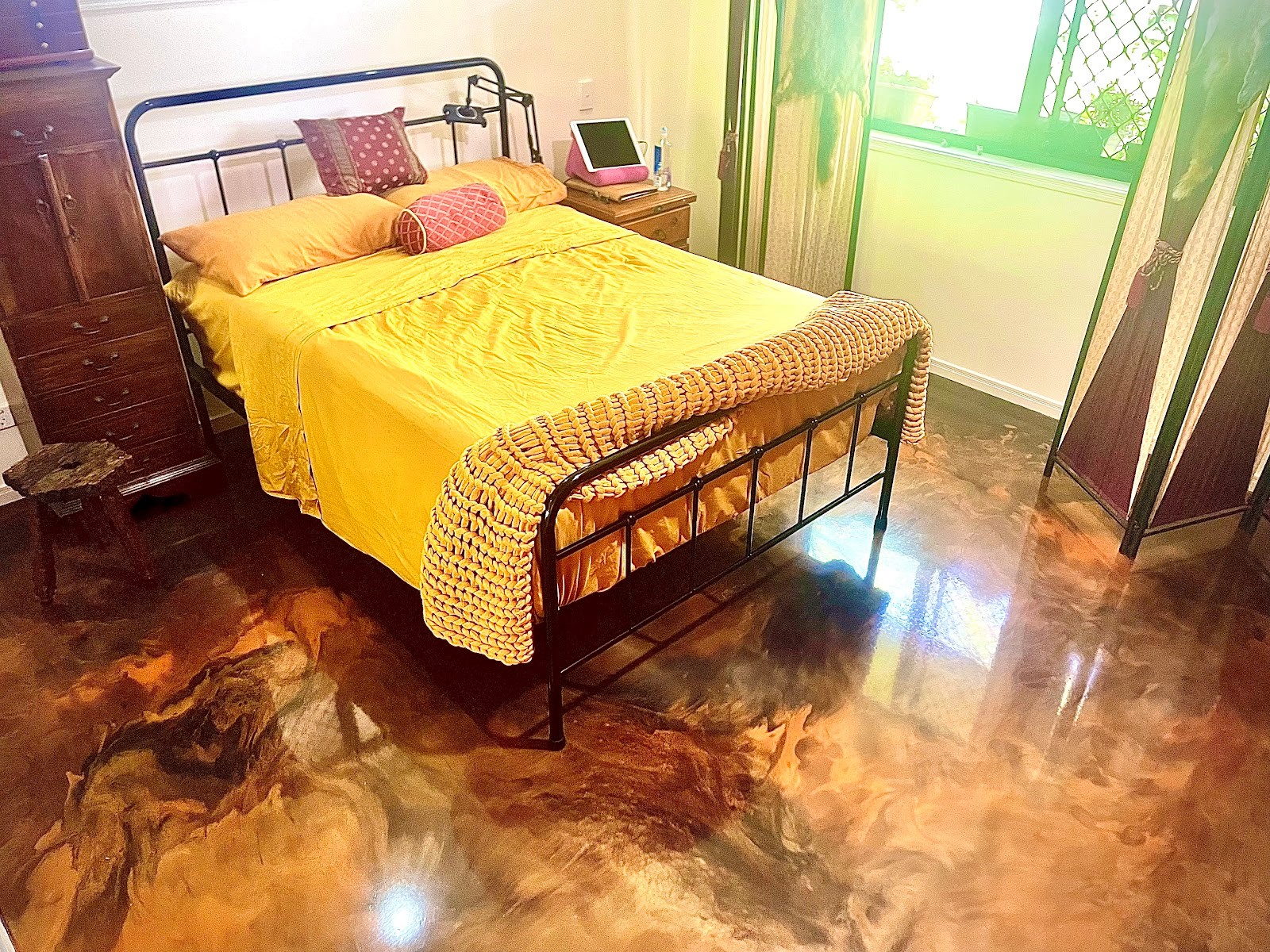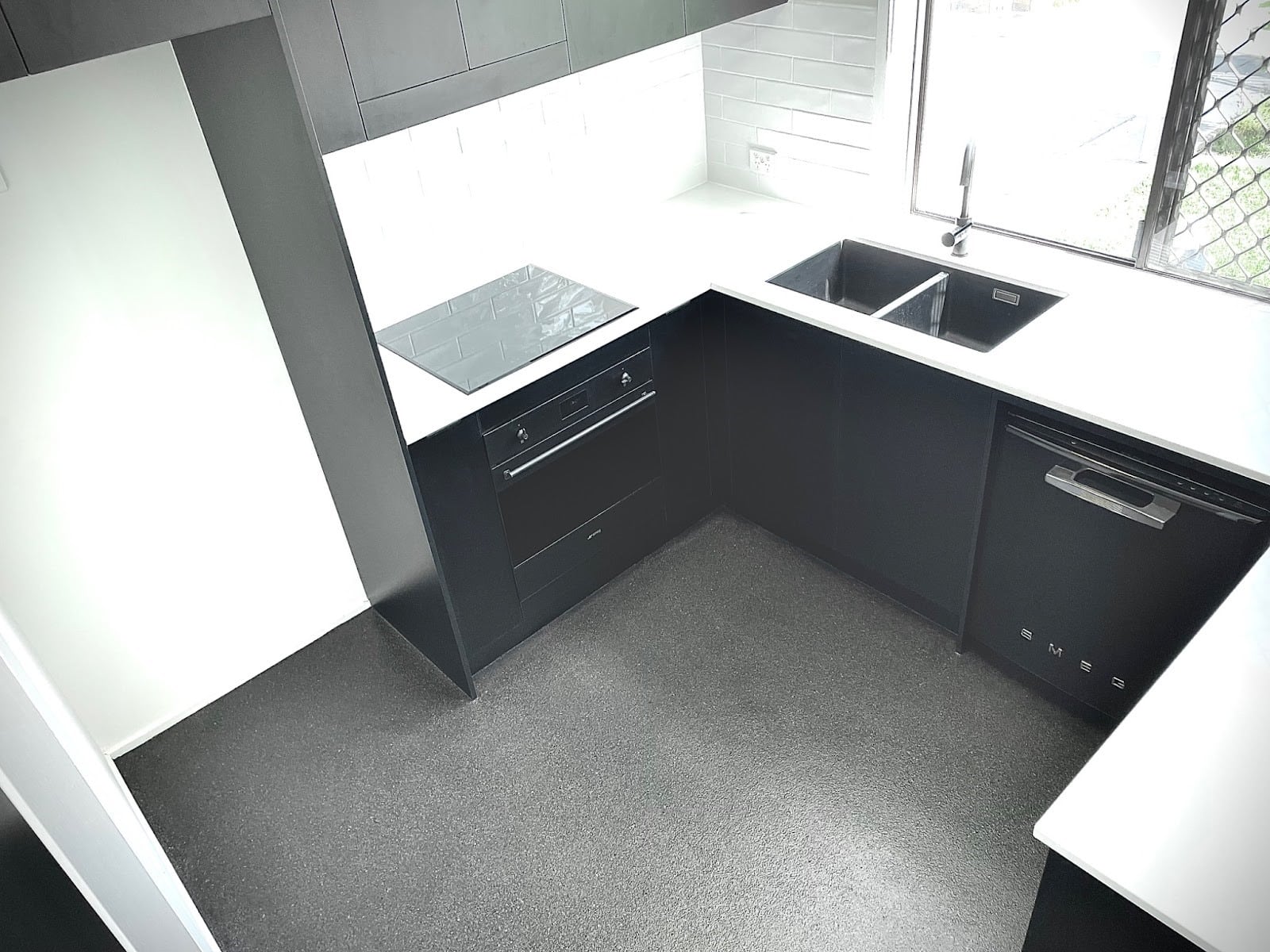6 Maintenance Tips for Interior Epoxy Flooring

Interior epoxy flooring faces different demands compared to garage or outdoor coatings. Indoors, you're typically dealing with foot traffic, furniture movement, and the occasional spill. Not tyre marks or oil leaks. UV exposure is possible & should be addressed.
Internal finishes can vary hugely. Some may opt for a top end epoxy self level finish that is smooth & glossy. Even in this section, clients can include options like a clear self level top coat that will disguise scratches easier, like glass.
Regular cleaning & maintenance will preserve your asset better.
A few practical habits will go a long way in keeping your floor looking brilliant. Let's start with the basics.
- Tip#1: Stay on top of daily and weekly cleaning
- Tip#2: Deep clean every few months
- Tip#3:Protect against wear and tear
- Tip#4:Reseal when needed
- Tip#5:Address damage early
Tip#1: Stay on top of daily and weekly cleaning
Keep your epoxy floor looking its best by removing dirt and grime before it causes damage. Sweep/vacuum &/or dust-mop each day, especially in high-traffic areas, to prevent grit from scratching the surface.
A gentle damp mop once a week helps lift deeper dirt. Use a pH-neutral cleaning detergent, not bleach. Bleach can discolour the floor & break down the epoxy's protective layer.
For spills, act quickly. Wipe up liquids immediately to stop them from staining or dulling the finish.
Robotic vacuums & mops are also fine to use but to ensure the softer bristles are used.
Tip#2: Deep clean
Even with regular upkeep, epoxy floors benefit from a deeper clean periodically. Use a soft scrub pad or a microfibre mop head to lift stubborn marks or residue.
Steam mops are okay. After cleaning, rinse thoroughly and dry the surface to leave a streak-free, glossy finish. Over time, you’ll see the benefits of regular maintenance & cleaning efforts.
Tip#3: Protect against wear and tear
You can significantly reduce surface damage with a few simple precautions.
- Place felt pads under chairs and furniture legs
- Use mats at entry points to trap dirt before it spreads across your floor
- Install soft casters on wheeled furniture
- Place a protective mat beneath chairs and trolleys in work zones
Be mindful of what footwear you allow on your floors. Epoxy is robust & sets at a minimum strength that is double that of a typical residential concrete slab. However, if you, say, walk through in your boots & collected a stone in the tread while out & about, this is ‘bad business’ for your floor.
Regulate the airflow as this can prevent condensation build up. This is good for your environment as well.
Tip#4: Reseal when needed
What we covered above (if you look after your floor, your floor will look after you) presents over time. You could test this theory but suggest you go with our guidance on this one.
There may come a time where you need to review rejuvenating the area. All floors have ‘traffic patterns’ that will wear faster than other areas. At Tough Floors, we will advise the pros & cons of your flooring choice. We will also advise if we feel epoxy is not a good option for you.
Sometimes a floor just needs a lift. This can be in the form of a top coat ‘freshener’ only, as with many timber floors.
Tip#5: Address damage early
Interior epoxy floors handle a lot, but heavy impacts, dragging sharp objects, or prolonged exposure to harsh cleaners can cause damage.
Look for chips, peeling, or worn patches where the surface feels rough or faded.
You can often patch small issues like minor scratches with a touch-up kit, but larger or spreading damage calls for professional attention.
As with any seamless floor, any patching can show through. Depending on the finish, the patch can ‘wear in’ & blend with the surrounding work.
Upgrade your space with durable, stylish epoxy flooring
Tough Floors is the expert in interior epoxy installation for homes and commercial properties across Australia. Get in touch today for a fast quote.


